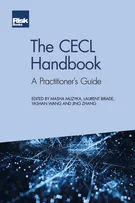Internal Models and Solvency II
Paolo Cadoni and Christian Kerfriden
Internal Models and Solvency II
Introduction: Starting the Solvency II Journey
Solvency II: The journey so far
Internal Models and Solvency II
Review of the Capital Adequacy Framework in Singapore
Insurance Liabilities Under IFRS 4 Phase II and Solvency II: Almost the Same Thing?
Solvency II and Mutual Insurance Companies
The Journey Towards an Approved Internal Model
The Road to Solvency II for a Life Insurance Company
Managing Model Risk
Solvency II and Reinsurance
ORSA: A Forward-looking Approach to Risk and Capital Management
Risk Governance: A Framework to Support Better Decision-making and a Journey Towards Continuous Improvement
Operational Risk and Solvency II: A Practitioner Perspective
Reporting Processes
Reporting Challenges under Solvency II: The Allianz Experience
The Audit of Solvency II Information
The Holistic Balance Sheet: A Different European Approach for Pension Funds?
Capital for Operational Risk: Some Fundamental Flaws
Reputational Risk: Success is Trust-dependent
Since the early 1990s, there have been remarkable advances in financial engineering and financial innovation. These innovations in financial products have also given rise to some new challenges for market participants and their supervisors. Risk-sensitive capital standards, the development of improved risk management practices and the greater role that firms’ own internal model for the measurement and management of risk are allowed to play in the definition of capital requirements – both in insurance and banking – are examples of this shift. More specifically, internal models have also been used increasingly for external purposes – for example, communicating information about an institution’s risks to creditors, shareholders, regulators and rating agencies.
EFFECTS OF THE FINANCIAL CRISIS
The 2007–08 financial crisis has called into question the use of internal models for the calculation of regulatory capital, both in banking where they are widely used, and in the forthcoming European insurance regulatory regime (Solvency II). The financial crisis exposed the limitations of banking models and how they failed to measure extreme financial events, capture all risks to which firms
Copyright Infopro Digital Limited. All rights reserved.
You may share this content using our article tools. Printing this content is for the sole use of the Authorised User (named subscriber), as outlined in our terms and conditions - https://www.infopro-insight.com/terms-conditions/insight-subscriptions/
If you would like to purchase additional rights please email info@risk.net
Copyright Infopro Digital Limited. All rights reserved.
You may share this content using our article tools. Copying this content is for the sole use of the Authorised User (named subscriber), as outlined in our terms and conditions - https://www.infopro-insight.com/terms-conditions/insight-subscriptions/
If you would like to purchase additional rights please email info@risk.net





